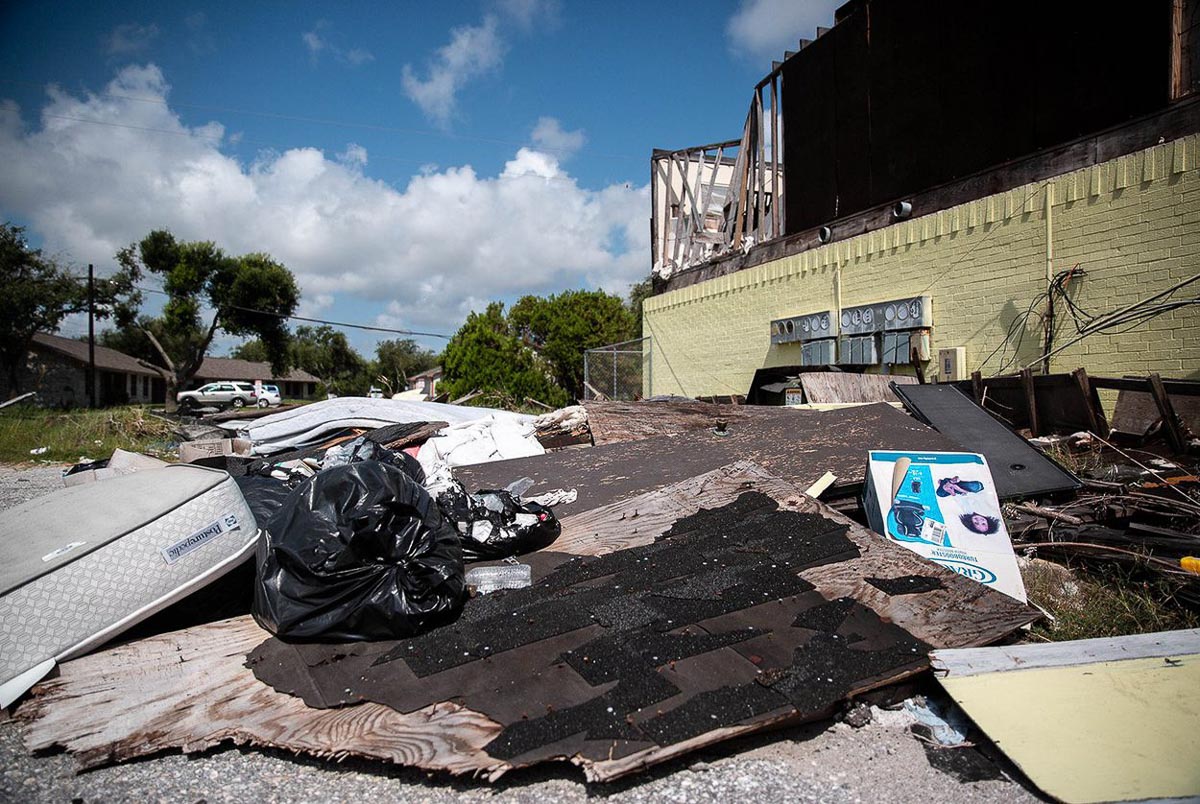This story was originally published by the Texas Tribune.
Hurricane Harvey recovery will end up costing the state as much as $2 billion, according to a report released Friday by the Texas Senate’s budget-writing panel, although it said costs may fluctuate based on how much help it receives from the federal government.
The feds have already given the state more than $2 billion in assistance for Harvey recovery.
The interim legislative report by the Senate Finance Committee says the largest share of that price tag will be related to public education as the state looks to help Harvey-affected school districts make up for lost revenue stemming from shattered property values and sharp declines in student enrollment.
The state may consider funneling $865 million to impacted public schools during the upcoming legislative session, the report says, although it makes clear that the Legislature is not legally obligated to do so.
The report — delivered to Lt. Gov. Dan Patrick, who ordered the panel to study a variety of fiscal issues ahead of the upcoming legislative session — comes as state lawmakers are already debating how to increase the state’s share of funding for public education, and the same day a special budget panel set a cap on how much money the Legislature must keep in the state’s emergency savings account.
Discussions have swirled about whether lawmakers should tap the rainy day fund during next year's session for both Harvey recovery and an overhaul to the school finance system, which are seemingly intertwined.
So far, the state has dolled out $2.7 billion for Harvey recovery — but $2.2 billion of that is federal money, according to the report.
As of Aug. 31, the last day of the state’s 2018 fiscal year, it had dolled out just shy of $500 million in state funds to about a dozen state agencies.
The $2.7 billion total was spread out among 71 state agencies, with the majority of the money going to about a dozen of them. The Health and Human Services Commission drew the lion’s share at $1.2 billion. The Texas Department of Public Safety received the next highest amount of funds related to Harvey recovery at $736 million.
“Hurricane Harvey will have a lasting impact on the state budget—and the Texas economy,” the report states, though it notes that “while there were short-term economic losses from Hurricane Harvey, the Texas economy bounced back to pre-hurricane levels after the first calendar year.”
A chart in the report shows that, during the first year after Harvey, there was a net economic loss of $3.8 billion. That jumped to a more than $2 billion economic gain during the two subsequent years.
The hardest-hit industries included “memberships (to clubs, sports centers, parks, theaters and museums), telecommunication services and entertainment,” according to the report, which cited the comptroller’s office. “Industries faring the best include health services, the food and beverage industry, rental housing, motor vehicles, furniture and clothing.”
The report includes eight recommendations for the Senate as it looks to address lingering Harvey-related costs, many of which involve monitoring ongoing costs, fallout and disbursement of funds, including for hazard and flood mitigation. The report also recommends raising public awareness about the National Flood Insurance Program and streamlining the way agencies report storm-related expenditures “to improve the accuracy and availability of cost-related data” for both Harvey and future disasters.
“Hurricane Harvey will prove to be the most costly disaster ever to hit the Texas coast,” the report states. “While immediate direct costs to the state are estimated to be approximately $900 million, the total costs are undetermined and will be incurred over the years ahead.
“The Legislature must examine the lessons learned from Hurricane Harvey in order to improve the state's ability to more effectively and efficiently respond to and recover from any future disaster.”

